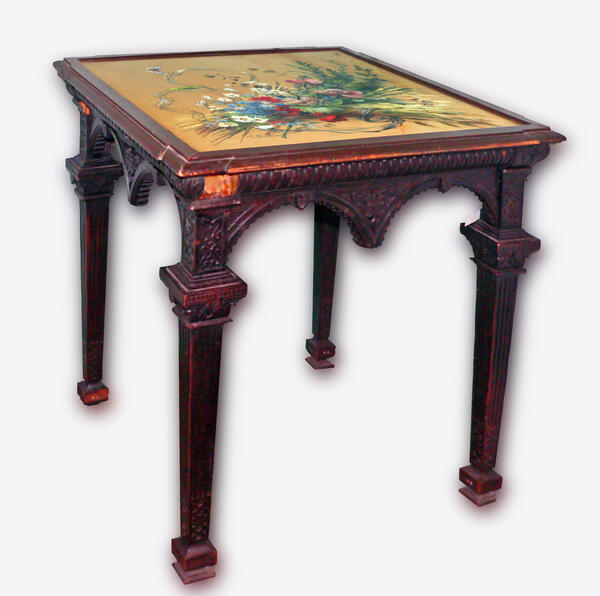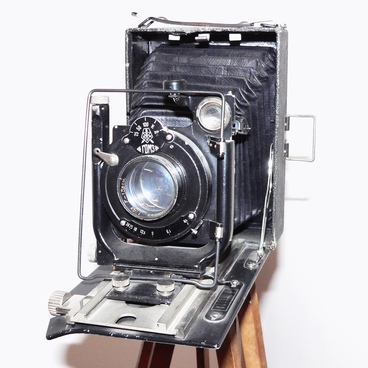In the collection of the Kótlas Museum, along with other antique furniture, is this carved wooden table with a glass top, designed for playing cards — in short, a card table. In Russia, these ‘l’ombre tables’ appeared around the middle of the 18th century, along with the card game of the same name, and soon went out of fashion when l’ombre was supplanted by whist and preferénce.
This table was made by cabinetmakers from the town of Kadnikov, in the Sókolsky District of Vológda Region — a place where the art of woodworking was very developed. Its style reflects the eclecticism of the last quarter of the 19th century. The underframe is carved, reminiscent of the architecture of the Renaissance: eaves, semicircular arches, and the legs reminiscent of Corinthian columns.
This table was made by cabinetmakers from the town of Kadnikov, in the Sókolsky District of Vológda Region — a place where the art of woodworking was very developed. Its style reflects the eclecticism of the last quarter of the 19th century. The underframe is carved, reminiscent of the architecture of the Renaissance: eaves, semicircular arches, and the legs reminiscent of Corinthian columns.




